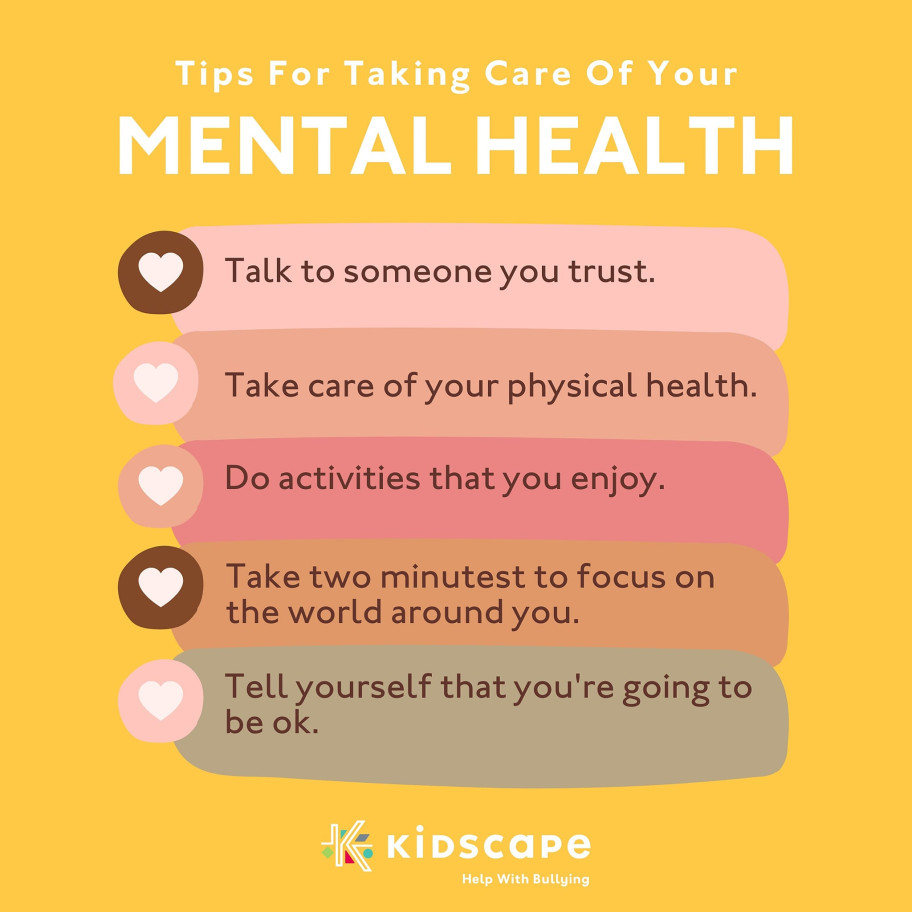Student Mental Health: How to Stand Up and Stand Out
Mental health is an important topic which is becoming even more so with the number of young people needing to seek out help skyrocketing in the last year alone. Mental health concerns impact people of all ages, and children are no exception. In fact, the NHS claims as many as one in six experience symptoms of mental health between the years of 5 and 19. This affects their ability to socialise, as well as having a negative impact on their education and happiness.
Creating a safe environment is essential for young people to feel they can express their thoughts and feelings without worry. We must also learn to recognise the signs when our children, students, and other young people are struggling with their mental health. Stand Up to Stand Out can help students not only recognise negative thought patterns but also create safe spaces for both them and their peers.
Why education is important for supporting mental health in young people
Everything from genetics to environment can influence mental health problems in young people. Efficient treatment and support are crucial to help young people manage their symptoms better. But with 22% of young people aged 17-24, and 18% aged only 7 to 16, suffering from mental health issues in 2022, more needs to be done to better support our young ones.
Mental health is just as important as physical health for the development of young people. However, due to the stigma around mental health issues, it can often be difficult for them to open up about their issues and seek help. With emotions such as embarrassment and shame attached to mental health problems, creating a safe environment is more important than ever to help young people get the support they need. Open conversations can help young people Stand Up and Stand Out, reducing the stigma around mental health.
Fighting the mental health stigma
Mental health issues aren’t always instantly noticeable. However, there are some signs that you and your students can look out for. Mental health can present itself as behavioural problems, including anger, fear, and stress, as well as increased loneliness, anxiety, and mood swings.
Other signs that someone might be suffering with mental health issues is a change in their routines – such as increased or decreased sleep, appetite, and energy. But it is important to note that this will look different for each individual, and it can sometimes be difficult to spot. A safe environment and open discussions are key to identifying and supporting mental health. Students are already under stress when it comes to school and sometimes their home life, which can mean mental health issues could make them overwhelmed. Making sure there is an opportunity for them to seek help and guidance is important.
However, many can find it difficult to open up due to the stigma that surrounds mental health, causing increased shame and embarrassment. This can often stop young people from seeking the help and support they need both inside and outside of school. Breaking down the barriers of the stigma and creating support networks which run on open communication can help influence students to reach out when they need help.
It is also important to understand that different genders deal with mental health problems and their discussions differently. In their research, Mind found that only 16% of male respondents received mental health support from a friend compared to 37% of female respondents. But mental health affects all young people, regardless of gender, so ensuring your students check in with their male peers is important.
Encouraging communication can be with anyone, from teachers and other staff to friends, family, and even online guidance. Support groups such as Side by Side, run by Mind, can help even young people open up about their thoughts and feelings in a safe environment – helping break down the shame of reaching out.
Encouraging open communication in schools
These safe spaces can be created by supportive friendships and trusted relations within a school. Not only should students be able to approach a teacher or other member of staff with their problems, but also their friendship groups.
One way to encourage open communication within a school is by building supportive friend networks. It is important to educate children on ways to handle difficult conversations, including not dismissing or minimising struggles. This also includes asking open-ended questions such as “Is there anything I can do to support your further?” which allows the friend who is struggling to express their feelings better.
And sometimes, friends simply need a bit of positivity in their conversations. Teaching young people how to give and receive compliments, as well as ways to encourage positive conversations, can help improve a peer’s day. Effective support networks can help students find pathways to therapy, counselling, or other forms of professional resources to help them with their mental health.
This communication needs to be in a safe space, however. Making sure there is a space in the school where students can discuss their mental health without being interrupted or shamed is important. Student Minds note that where and when are important for getting young people to open up.
Healthy habits to give your students a boost
Habits and routines are essential both for schools and fighting against mental health problems. Friends can be a good network to ensure their peers are eating, sleeping, and exercising to the right level – all having a positive impact on mental health.
At SUSO, we understand that physical and mental health are linked. By encouraging healthier habits, such as switching from added-sugar drinks to our fruity ones with no added sugar, your students are making a positive choice. And by keeping to a healthy habit, students can better regulate their routines and emotions.
Exercise can be a great way to enforce these habits. Not only does exercise help encourage healthier eating and sleeping habits, but it can also help regulate emotions in young people. A 30-minute walk can release dopamine, giving students a mood booster in the middle of the day while also offering a boost for new and existing friendships as it opens up the student’s social circle.
How schools can facilitate safe spaces
Campaigns around mental health can be a great way for schools to actively facilitate a safe space for students. Not only is it important for schools to offer a place for open communication during school hours, but they are also great hubs for educating children and young adults on mental health and wellbeing. Resources and training for schools can be found with organisations such as The Place2b. These courses provide information and certifications for teachers and staff to help them appropriately manage a student’s mental health.
Students can get involved by advocating for mental health, becoming mental health mentors, or volunteering to raise money and awareness for different mental health organisations. This can create a community of students and staff opening conversations about the stigma of mental health, improving wellbeing, and raising awareness.
Keeping our young ones safe is a must for all parents, guardians, and education staff. And mental health is something which needs to be addressed both inside and outside of schools. Further awareness and safe spaces within community areas, such as schools, can help students open tough conversations, help their peers, and reach the support and guidance they need.
Sources:
Feelings and symptoms – NHS (www.nhs.uk)
Side by Side: our online community – Mind
Benefits of physical activity on mental health – Priory (priorygroup.com)
Starting a conversation – Student Minds
yp-with-focus-on-trauma-scoping-research-report.pdf (mind.org.uk)








